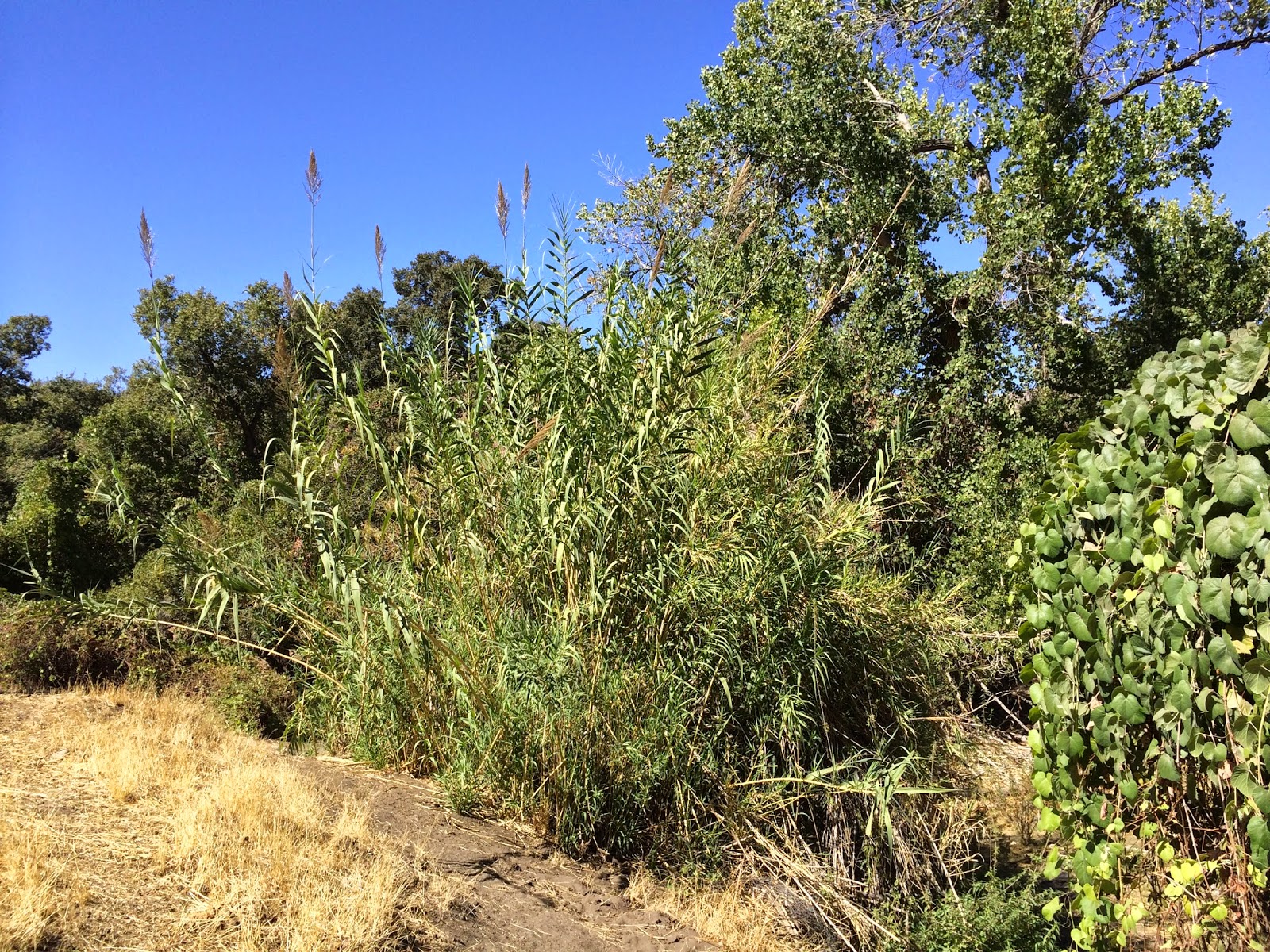Here at the Conservancy we have been celebrating a small but
ringing achievement, and we thought we would share with you the good news… In
year 1 of our stewardship program, we have eradicated a very bad, very scary
weed from the Ranch. Any of you who have spent time in creek areas along our
southern California coastline will be familiar with this ecosystem monster and
how it can transform a once biologically diverse and healthy riparian area into
a grassy nightmare:
Arundo donax
(shiver).
.JPG) |
| Arundo donax on Tejon Ranch. |
For those of you who aren’t as familiar with arundo, you may
be confused about why we would demonize this species and relish its removal
from the Ranch.
Arundo donax, or
giant reed, is a perennial grass from Asia. It was reportedly brought here both
historically by Spanish settlers for building and livestock food materials, as
well as in modern times as a fast-growing ornamental for landscaping. And fast
growing it is, reaching up to 30 feet tall and growing at a rate of up to 2
inches every day, thus overtaking and outcompeting native plant communities and
drastically altering habitat for animal species. This rapid growth is estimated
to cost almost 530 gallons of water for every 1 meter of standing biomass. So
not only does it grow and spread incredibly fast, it is an extreme water
consumer which in these dry times creates even more of an undue burden on the
scant water available for both wild and anthropogenic systems. If this wasn’t
enough, scientists and land managers have attributed a long and nasty laundry
list of extreme ecological transformations attributed to arundo dominated
areas, including drastically changing the hydrology of creek systems resulting
in degradation of biodiversity and significantly increasing fire frequency and
severity. In the California Invasive Plant Council (Cal-IPC) Arundo Distribution
and Impact Report from 2011, they estimated that arundo inhabited over 8,900
acres of coastal watersheds between Monterey and San Diego, with a ‘typical’
stand measuring over 80% cover. Although there are active treatment campaigns
throughout California, the rapid growth and dispersal of this species causes
grave concern among scientists and land managers and has prompted Cal-IPC in
their 2006 California Invasive Plant Inventory as rating it with a high listing
at the state level--severely impactful, moderately invasive, and severely
distributed.
 |
| Flowering arundo perched on the banks of Tejon Creek. |
Scary, right? Here on Tejon Ranch we had two known stands of
arundo in the Old Headquarters conservation easement on the San Joaquin Valley
side of the property—one adjacent to agricultural operations and another
perched on the bank above Tejon Creek beside a historic site. Working
collaboratively with both the Tejon Ranch Company and the Los Angeles
Conservation Corps, we used both mechanical and manual methods to remove the
above ground biomass, and we have been closely monitoring these areas for
regrowth. Although our arundo patches were both very small (totaling about half
of an acre between them), we were thrilled to remove the unnecessary risk they
posed to spreading and degrading our diverse systems here on the Ranch. Many
thanks to the Tejon Ranch Company and the Los Angeles Conservation Corps for
supporting this important work!
 |
| LACC workers manually removing arundo from Tejon Creek. | | |
|
|
References
Bell, G. 1993. Biology and Growth Habits of Giant Reed (Arundo donax). Arundo donax Workshop Proceedings, Ontario, CA.
Giessow, J., J. Casanova, R. Leclerc, G. Fleming, and J.
Giessow. 2011. Arundo donax (giant
reed): Distribution and impact report. Prepared for the State Water Resources
Control Board by the California Invasive Plant Council. Agreement No.
06-374-559-0.
Cal-IPC. 2006. California Invasive Plant Inventory. Cal-IPC
Publication 2006-02. California Invasive Plant Council: Berkeley, CA.
Katagi, W., C. Loper, and N. Jackson. 2002. Southern
California Integrated Watershed Program: Arundo Removal Protocol.
.JPG)


